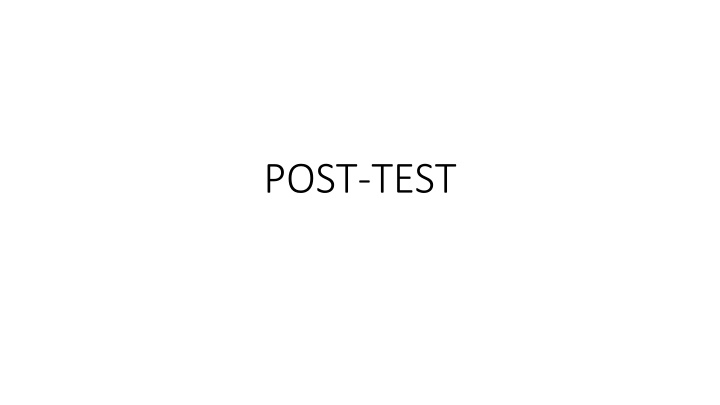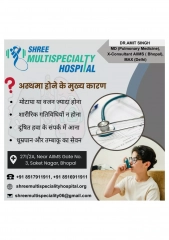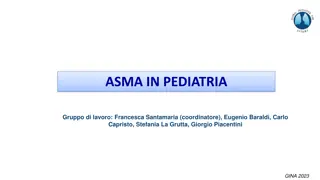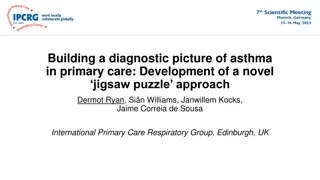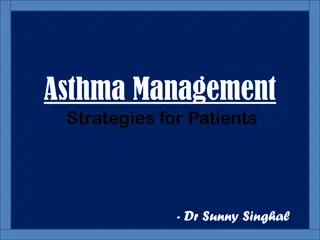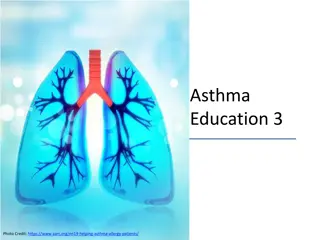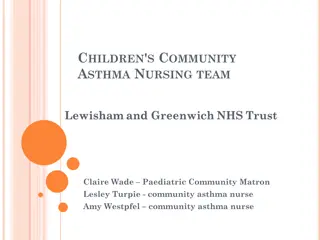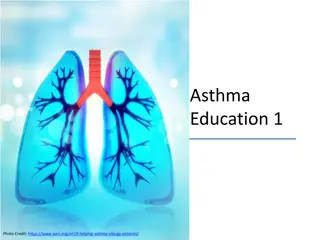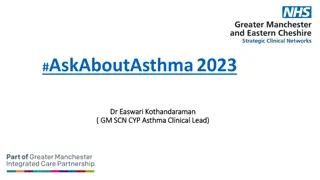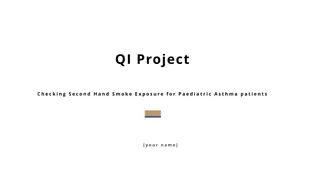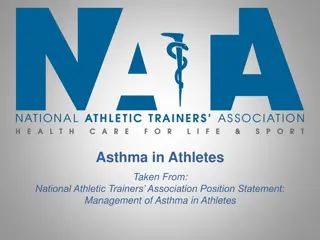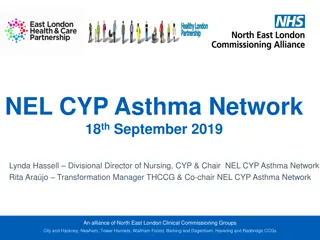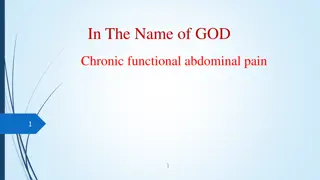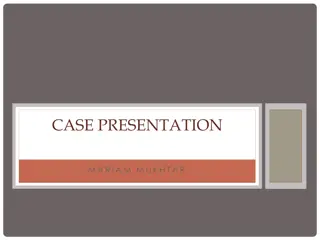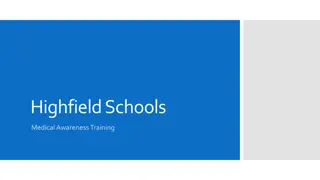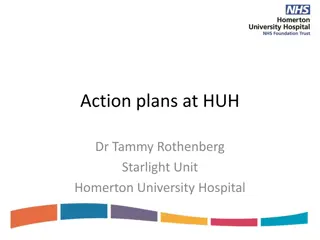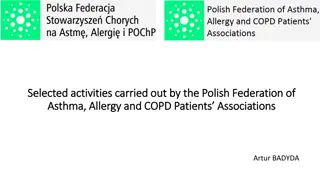Asthma, GERD & Dyspepsia: Diagnosis and Management Scenarios
In this medical scenario-based content, we explore cases of bronchial asthma in an 8-year-old boy with symptoms frequency assessment, risk factors, and management strategies. Moving on to dyspepsia and GERD, we delve into diagnostic approaches for a 54-year-old male with H. pylori and a 57-year-old man with epigastric discomfort. From symptom control classification to treatment regimens, these cases offer insights into real-world medical challenges.
Download Presentation

Please find below an Image/Link to download the presentation.
The content on the website is provided AS IS for your information and personal use only. It may not be sold, licensed, or shared on other websites without obtaining consent from the author.If you encounter any issues during the download, it is possible that the publisher has removed the file from their server.
You are allowed to download the files provided on this website for personal or commercial use, subject to the condition that they are used lawfully. All files are the property of their respective owners.
The content on the website is provided AS IS for your information and personal use only. It may not be sold, licensed, or shared on other websites without obtaining consent from the author.
E N D
Presentation Transcript
BRONCHIAL ASTHMA 1. An 8 year old boy has symptoms at least thrice a week. He requires stopping his physical activities (like running) due to asthma symptoms. He also has nocturnal symptoms at least once a week. His FEV1 was 84%. What is his symptom control classification? (A) Well controlled (B) Partly controlled (C) Uncontrolled
BRONCHIAL ASTHMA 2. Having any of these risk factors increases the patient s risk of exacerbations even if they have few asthma symptoms EXCEPT: (A) Lower bronchodilator reversibility (B) Obesity (C) High SABA use (D) Chronic rhinosinusitis (E) Pregnancy
BRONCHIAL ASTHMA 3. Loida is a 42 y/o seamstress with previously controlled asthma who presented with sudden onset of shortness of breath & wheezing after eating kwek-kwek . She came to the triage in respiratory distress with RR of 32 breaths/min, HR of 124 bpm and BP of 90/60 mmHg. She appeared agitated, hunched over and spoke only with a few words. How would you manage Loida s case? (A). Start her on O2 therapy targeting an O2 saturation of 94%. (B). Start her on inhaled SABA at 4 puffs every 20 minutes during the 1sthour. (C). Transfer Loida to the acute care unit. (D). All of the above
DYSPEPSIA & GERD 1. An endoscopy was done on a 54 year old male with subsequent H. pylori testing which turned out positive. You want to start him on H.pylori treatment. Which of the following is the appropriate treatment against H. pylori? (A.) Omeprazole 40mg/cap BID +Clarithromycin 500mg/tab 1 tab OD + Metronidazole 500mg/tab 1 tab BID for 10 days. (B.) Pantoprazole 40mg/cap OD + Clarithromycin 500mg/tab 1 tab BID + Amoxicillin 500mg/tab 1 cap TID for 7 days. (C.) Rabeprazole 20mg/cap BID + Clarithromycin 500mg/tab 1 tab BID + Amoxicillin 500mg/tab 2 caps BID for 10 days (D.) Esomeprazole 40mg/cap OD + Amoxicillin 500mg 2 caps BID + Metronidazole 500mg 1 tab BID for 14 days
DYSPEPSIA & GERD 2. A 57 year old man presented with a 6 month history of daily epigastric discomfort relieved with food intake. He also had difficulty of swallowing and odynophagia. He was otherwise healthy, had no other gastrointestinal complaints, and had not lost weight. He did not smoke and was a social drinker. Physical examination and basic laboratory tests (complete blood count, basic metabolic panel, and urinalysis) were normal. What is the best diagnostic and management strategy for this patient? A. Prompt endoscopy B. An empiric trial of anti-secretory drugs C. Test for H. pylori and treat those who test positive D. Test for H. pylori and perform endoscopy on those who test positive E. Barium swallow
DYSPEPSIA & GERD 3. When a patient presents with indigestion and they have no red flags or indications of alternative causes for their symptoms, which of the following features is the most important in determining management? A. Belching B. Bloating C. Early Satiety D. Heartburn E. Feeling of fullness
LEPTOSPIROSIS 1. A 27 y/o truck driver waded in flood waters yesterday when his vehicle stalled in the middle of the road after a torrential downpour. He walked thru flooded alleyways for about 30 minutes. Upon physical examination, he was noted to have an abrasion on his left foot. What post-exposure prophylaxis would you prescribe this patient? A. Doxycyline 100mg/cap 2 caps daily for 3-5 days B. Doxycyline 100mg/cap 2 caps as single dose C. Doxycyline 100mg/cap 2 caps once a week from time of exposure up to 1 month after D. Azithromycin 500mg/tab 2 tabs OD on day
LEPTOSPIROSIS 2. Which among these clinical features of a patient with leptospirosis will warrant prompt hospital admission? A. Stable vital signs B. Absence of mengismus C. Good urine output D. Vomiting & diarrhea
